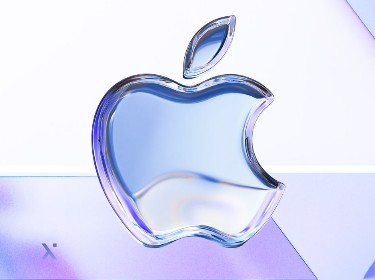At the time of the popularization of a healthy lifestyle, fitness and regular workouts have become a trend. Customers choose among thousands of similar apps. How to stay competitive and generate stable revenue in this booming market?
Arnold Schwarzenegger said, “If you don’t find the time, if you don’t do the work, you don’t get the results.” Fitness apps are designed to remind people of the necessity to find that time and to monitor the results. As a person who has never been a fan of group training, I’m excited about the modern choice of fitness products and solutions on the market. I can try boxing, cardio, yoga, and whatnot right from home. Smartwatches show me my health metrics, and I feel I’m controlling my state. For businesspeople, such a diversity of products means they have to fight fierce competition. How to make potential customers notice you?
At PixelPlex, we have experience in developing apps for various industries. Fitness and health apps have their peculiarities. Read this overview to receive a complete picture of the types of fitness apps, market trends, and development best practices.
Why invest in fitness app development?
![]()
Health and fitness app development market trends indicate that modern people think about their health and show growing interest in solutions that help track physical activity and nutritious diets. An interesting fact is that 96% of users utilize only one fitness application. That’s why it is important for businesses to find a reliable health and fitness app development company. Applications with sufficient features and a convenient design will retain customers and bring stable revenue.
The COVID-19 pandemic increased the adoption of home workouts and virtual fitness solutions. People tried home-based exercise methods to leverage physical activity and support mental well-being. The tendency stayed after the pandemic as well. 70% of deaths are caused by non-communicable diseases, and a healthy lifestyle with fitness apps can contribute to longevity and the prevention of multiple health issues. Therefore, the target audience of fitness apps will continue to grow.
Trends that are currently shaping the market, such as AI-powered coaching, integration with wearables, real-time analytics, gamification, subscription models, etc., have influenced the sphere of fitness mobile app development as well. Fitness in VR glasses, for instance, allows people to cope with gym anxiety and try the types of workout they might be reluctant to try in real life, like boxing or dance-based cardio routines. The AR and VR development services enable businesses to attract more customers.
PixelPlex created a multifunctional health app with a secure patient record depository, Apple Watch, and Fitbit integrations. Want to know the details? Check out the case study
Types of fitness apps
![]()
The mobile application industry experienced an upsurge in 2024, with worldwide investment increasing by 25% relative to the downturn in 2023. Investors have become careful and picky in choosing startups. Therefore, it is important to demonstrate strong fundamentals and potential to demonstrate high ROI. Reliable partners that provide mobile app development services can bring any idea to life. However, it should meet the current requirements of the market. Here are the main categories of fitness apps:
Activity tracking apps
These apps use GPS and sensors to monitor a person’s physical activity. It includes steps, traveled distance, burned calories, and heart rate. Examples of popular activity tracking apps are Fitbit and Google Fit. They help users keep track of their daily movement and overall fitness levels. A former Fitbit executive has raised $40 million in funding for the digital wellness and fitness company FitOn. The app offers personalized programs and workouts with celebrities such as Lindsey Vonn, Halle Berry, and others.
Workout and training apps
Apps in this category offer exercise routines, training programs, and workout libraries for different fitness levels and goals. Nike Training Club is a popular example. Users choose between over 200 workouts, such as yoga, HIIT, pilates, strength training, etc. Fitness tracker app development often focuses on incorporating features such as progress tracking, performance analytics, guided workouts, and healthy living tips to enhance the user experience.
Nutrition and diet apps
These apps help users log their meals, count calories, and manage nutrition. They provide personalized diet plans and track macros and micronutrients. MyFitnessPal and Lifesum are well-known apps in this space. The review funded by the World Health Organization (WHO) proved that the utilization of smartphone apps (offline and online) results in improved healthy habits across groups of people with different health statuses. Apps encourage nutritious eating habits among patients suffering from chronic illnesses. Personalized notifications that users receive in combination with expert guidance advance public health nutrition initiatives.
Personal trainer apps
These apps combine the features of trackers with AI functionality. Virtual coaches provide training sessions, develop workout plans, and support users. Apps like Trainerize fall into this category. Personal trainer app development is becoming popular as virtual fitness assistants are accessible anytime and anywhere. The AI algorithms in fitness apps analyze demographics and health conditions and generate personalized workout programs.
Yoga and meditation apps
Modern life is full of stress. It has become easy to lose focus and experience a burnout. Meditation apps help people reconsider their priorities and unwind. Such apps offer guided yoga sessions, meditation exercises, and stress management tools. Examples include Calm and Headspace. Many meditation apps feature guided sessions and sleep stories narrated by celebrities with calming voices. For example, the app Calm has used the voices of Harry Styles, Matthew McConaughey, Idris Elba, Laura Dern, and Kate Winslet to create soothing and relaxing content.
Mood and wellness tracking apps
These apps help users monitor emotional health, stress levels, and mental wellness. Daylio and Moodily are the most common examples. Users rate their mood on a scale and therefore track the triggers that cause anxiety, depression, and mood swings. People with bipolar diagnosis and other mental issues also use these apps to track the symptoms and get better prepared for doctor’s appointments.
FemTech apps
Flo Health and Clue are leading examples of this type of fitness mobile app development. They target women’s health specifically, track menstrual cycles, pregnancy, and reproductive health. However, women should make sure they trust a vendor, as there’s always a third party between them and their personal information. It is recommended never to use a simple sign-on or logging via a Google account for privacy reasons.
Gym and equipment management apps
These integrate with gym equipment to personalize workout settings and track user performance automatically during sessions, often using IoT technology. Health and fitness app developers create such software for both gym managers and clients. Gym administrators view clients’ purchase histories, account balances, and schedules. They can analyze the data for insights regarding retaining clients and improving customer experience.
Home workout apps
Those who prefer exercising at home or can’t access gyms are interested in home workouts. These apps offer customizable training plans with different types of fitness activities. They also often sync with fitness trackers. The subscription price ranges from $10 to $20 per month. If you pay for longer periods of time, there might be tangible discounts.
Fitness challenge and social apps
Motivation plays an important role in a fitness routine. Training in a group creates healthy competition. Such apps build a whole community of people training together. They join virtual challenges, share progress, and stay motivated. Strava is a prime example in this field. It has gained popularity in the cycling and running communities. The app tracks users’ speed and distance and shares the results. It also suggests routes other participants are taking.
How to Create a Mobile App Startup
Predictive Analytics Examples Across Industries
How to Ensure Mobile App Security
Key features to include in a fitness app
![]()
As you see from the list of types of fitness apps, they all serve different purposes and target various audiences. However, their main idea is engaging people in sport, that’s why it is possible to determine similar features.
To understand what your app should be capable of, you should know what users need your app for. Ask yourself a question: “Why might a potential user want to download my app?” Is it for monitoring workout activity, keeping to a healthy diet, or consulting with fitness experts? We’ve gathered some of the most common ‘pains’ in the image above.
For the readers’ convenience, we’ve decided to group the key features of a successful fitness app in the following way:
Personalized fitness & coaching
Types of workouts and levels of activity depend on the peculiarities of each user. That’s why it is important to create personalized user profiles with their age, height, weight, and training objectives. On the basis of these details, the app suggests training activities, diet recommendations, and starts tracking performance and praising for accomplishments. AI functionality might also provide tailored advice and virtual coach assistance.
Tracking, monitoring & analytics
Fitness mobile app development providers create apps that synchronize with smartphone sensors and wearable devices to monitor users’ activity. They count steps, calories, heart rate, and other metrics. Therefore, the app evaluates the progress and sets further goals or motivates for better results. Visual dashboards and charts allow users to see their improvements over time, which also works as an incentive for pursuing healthy habits. The functionality may include logging meals or uploading pictures of meals to count calories and nutrients.
User engagement & support
Sharing the results with friends and family to receive support is an important part of a healthy lifestyle. Therefore, fitness apps integrate with social media platforms. Apart from users’ motivation, social platforms might bring new clients to a fitness business.
Another important aspect of user engagement is timely notifications. The app should remind users to stay properly hydrated, notify them when it’s time for a workout, or reward them with special badges or points. At the same time, these settings should be customizable to prevent the notifications from becoming intrusive.
Technology & security
Fitness apps should integrate with wearable devices, smartwatches, trackers, etc. It ensures a holistic approach to healthy habits and lifestyle development. Synchronization means the data is accurate. As for privacy, fitness apps must protect users’ personal health data through strong security measures like encryption and strict authorization. Besides, fitness apps must comply with regulations that protect user privacy, such as HIPAA, GDPR, FDA, etc.
Steps of the fitness application development process
![]()
The competition among fitness apps is growing, and companies have to respond swiftly. Before moving on with the exact steps of the development process, it is important that business leaders and executives concentrate on the following imperatives.
Differentiate the target audience
It is a mistake to try to grab the attention of all segments of the audience with a single product. It is crucial to concentrate on differentiation. Building a brand is also important. When there are multiple coffee shops in the street with more or less the same products, you would choose the one with a vibe. The one that reflects your mood and matches your expectations. And it will be a coffee shop with a style and the brand identity. The same with fitness apps. Sharpen your propositions and offerings.
Make sure your business remains competitive
- Keep the operational excellence of your product. It involves improving unit economics and return on invested capital by cutting costs and optimizing pricing, while still meeting heightened customer expectations.
- Manage the revenue with the help of sophisticated analytic tools. Gain insights for better pricing and promotions tied to innovation. There’s always room for improvement in this area.
- Enable digital customer experience to enhance customer engagement and derive more value from digital platforms. AI is the technology that will soon be everywhere.
- Personalize marketing to build brand loyalty. Connect emotionally with your customers through targeted campaigns, storytelling, and influencer partnerships.
- Attract top talent and increase their productivity through technology. Help your employees grow professionally.
Consider partnerships for future growth
The rapid consolidation in the fitness industry presents opportunities for mergers and acquisitions (M&A), but M&A should be used as a strategic tool to accelerate growth and gain new capabilities, not as a standalone strategy. Successful companies start with a clear strategy and use M&A, partnerships, or joint ventures to scale or enter new areas. Despite misconceptions that M&A often destroys value, well-planned acquisitions consistently outperform competitors. Leading fitness companies proactively pursue deals and link acquisitions to value creation and integration plans.
The process of fitness app development includes the following common stages:
1. Plan the strategy of your business. Select the target audience and compile a portfolio of your potential customers and their needs.
2. Define the type of application and the functionality that will cover the needs of your target audience.
3. Design an intuitive and visually appealing interface. Make sure it corresponds to your brand image and style.
4. Develop the app with a chosen technological stack. Cross-platform app development allows you to attract more users to your app, for example, a trusted Flutter development agency will be able to perform your cross-platform project full-cycle.
5. Test your product and fix bugs and flaws. Apply different types of testing (integration, usability, functional, etc.) to ensure perfect performance across different devices and platforms.
6. Deploy your app to the chosen platform.
7. Support a continuous improvement of the app with regular updates, fixing issues, and adding new features according to users’ feedback.
8. Scale your business by developing new products, partnering with reliable firms, and extending the audience.
Need a solution that would motivate users to take up sports? This app allows for making bets on training achievements and receiving rewards. Discover the details of the FitnessChain project
Compliances required for fitness app development
Any fitness app development company should make sure its products comply with various health regulations. It is important to protect users’ data and provide them with secure and reliable solutions.
- HIPAA (Health Insurance Portability and Accountability Act): This one is necessary if your app handles sensitive health data in the U.S. It ensures the privacy and security of medical information.
- GDPR (General Data Protection Regulation): It applies to user data protection for European users.
- FDA (Food and Drug Administration) Regulations: The FDA regulates food, drugs, medical devices, biological products, cosmetics, and products that emit radiation. With fitness apps, it is necessary mainly for AI-driven healthcare apps classified as medical devices.
- ISO/IEC 27001: These are information security management standards to ensure secure handling of user data.
- CCPA (California Consumer Privacy Act): This act governs data privacy requirements for users in California.
- PCI DSS (Payment Card Industry Data Security Standard): This compliance is required if the app processes payments to ensure the security of financial transactions.
There are also the Federal Trade Commission (FTC) guidelines for advertising and marketing. They ensure that all advertisements are truthful, not misleading, and supported by evidence. Advertisers must avoid deceptive claims and must have evidence to back up all product and service claims. Advertisements cannot be unfair or omit important information that might mislead consumers. Besides, special care is required when advertising to vulnerable groups like children. The FTC actively investigates and can fine or take enforcement actions against companies violating these rules.
Monetizing fitness apps
Here is a table that summarizes popular strategies to monetize fitness apps.
| Strategy | Description | App examples |
| Freemium Model | Users access basic features for free and pay for premium features or content | Peloton, Fitbod |
| Subscription | Users pay recurring monthly/yearly fees for full access and regular content updates | Peloton, Centr, 8fit |
| In-app advertising | An app displays ads such as banners, videos, etc., and receives revenue for impressions or clicks | MapMyRun |
| In-app purchases | People buy advanced training plans, nutrition guides, or content bundles inside an app | Zombies, Run! |
| Affiliate marketing | Apps promote third-party products for commission on sales | MyFitnessPal |
| Partnership & sponsorship | Businesses collaborate with brands for sponsored content or challenges | Nike Training Club |
| Gamification | Badges, leaderboards, and challenges increase engagement and monetize entry fees | Nike Run Club, Strava |
AI Business Ideas
Flutter App Development Cost Explained
Challenges of the fitness mobile app development process
![]()
It is important to get prepared for possible difficulties and know how to react swiftly. Here are some ideas on how to address the most common problems:
- Insufficient research: Avoid building a “me-too” app. Conduct thorough market and competitor analysis, understand user needs, and validate the idea before development.
- Poor UX: Cut the abandonment rate with intuitive and simple navigation. Users should be able to onboard smoothly and manage the functions intuitively.
- Lack of personalization: Users might be frustrated with one-size-fits-all solutions. Increase engagement and retention with AI technologies and ML. Tailor workout plans, nutrition, and goals to individual user behavior.
- Data security issues: Customers trust you with their personal data. Make sure you implement strong encryption and authentication, comply with GDPR/HIPAA, and be transparent with privacy policies.
- Poor performance: With so many solutions available, customers will choose the one with perfect performance. Optimize code, ensure cross-platform compatibility, test for various devices and network conditions, and monitor app health continuously.
- Poor monetization strategy: Immediate charging and too many ads upset users. Choose flexible models like freemium or subscriptions. Feel the balance between revenue and user satisfaction.
- Lack of wearable device integration: Smartwatches and fitness trackers are very popular. So, prioritize compatibility and seamless syncing with wearables to enrich user data and engagement.
Conclusion: choosing the right software development partner
Fitness apps improve the general health of the population. As we mentioned in this overview, there’re studies that prove that people treat their health issues more responsibly nowadays and are eager to take part in improving health outcomes. That is why fitness apps will find their audience.
On the other hand, it is important to differentiate and to be able to compete. Here is where reliable software development companies like PixelPlex step in. We help with the latest technologies, foresee possible difficulties, and offer a complete cycle of services from the initial idea to deployment and maintenance. Tech partners have experience with AI and ML and are ready to implement scalable cloud infrastructure and secure data management. Please contact our experts, and we will discuss the details of your project.
FAQ
Fitness app development is going to be further enhanced with AI technologies, integration with wearable devices, and real-time tracking. AR and VR features will create more immersive experiences for users. In general, fitness apps are becoming parts of comprehensive health ecosystems, in which people take responsibility for managing their health and are eager to live long and actively.
The price of fitness mobile app development depends on the technology stack, complexity of the features, and marketing costs. It may range from $30,000 to $300,000 and more.
An MVP with the core functionality might take from 3 to 4 months. A full-featured fitness app might need around 9 months for development, testing, and deployment.
Flutter and React Native allow developers to build applications for several platforms and significantly shorten the time-to-market. Backend experts use NET, Node.js, and Python. Besides, API integrations like Google Fit or Apple HealthKit add functionality to the apps. You can turn to a full-cycle Flutter app development company in USA, for example, for a comprehensive project implementation.




